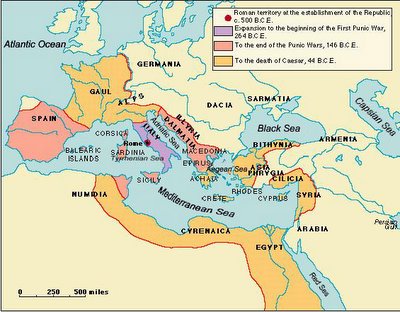The Later Roman Republic part 1

The Later Roman Republic has always been one of my favourite topics to do with Roman History, it is a period of history filled with violence, intrigue and change. It contains such diverse characters such as Marius, Sulla, Pompey, Caesar, Cicero, Cato the Younger et al.
It was a period which saw rapid change with territorial expansions e.g. 133 BC there was 6 provinces by 44 BC an additional 12 or so had been added, spread of Roman/Italian traders e.g. Cirta, Asia and the increase in wealth and reputation of certain Roman senators e.g. triumphs of Lucullus and Pompey.
Politica life also saw change where there had been limited horizons in 133 BC, by 44BC the Mediterranean was a Roman basin, the Populus Romanus changed with the influx of Italians, there was a polarization of politics which saw more violence in the Roman Republic while the Equites became an economic and political pressure group.
The Roman economy saw a influx of wealth, which created new problems for the Republic as the competition natually increased as the rewards got bigger and bigger which helped contribute to the civil wars which raged on during the 1st Century BC.
Society also saw a transition with the decline of Patrican class and the rise of Plebian aristocracy for example the dominance of the Metelli and their client Marius (whose army reforms made the Roman army a political tool but I shall blog about that another time), this rise was linked to a declining birth rate, ongoing wars and the proscriptions under Sulla.
Ancient writers such as Livy, Sallust, Polybius emphasised the moral decline of the aristocracy and attributed this to the influence of the Greek east > greed, avarice, ambition.
Degeneracy of the aristocracy and decline of religion more than anything was emphasized by Augustus for the ‘fall of the republic'.

The Later Roman Republic has always been one of my favourite topics to do with Roman History, it is a period of history filled with violence, intrigue and change. It contains such diverse characters such as Marius, Sulla, Pompey, Caesar, Cicero, Cato the Younger et al.
It was a period which saw rapid change with territorial expansions e.g. 133 BC there was 6 provinces by 44 BC an additional 12 or so had been added, spread of Roman/Italian traders e.g. Cirta, Asia and the increase in wealth and reputation of certain Roman senators e.g. triumphs of Lucullus and Pompey.
Politica life also saw change where there had been limited horizons in 133 BC, by 44BC the Mediterranean was a Roman basin, the Populus Romanus changed with the influx of Italians, there was a polarization of politics which saw more violence in the Roman Republic while the Equites became an economic and political pressure group.
The Roman economy saw a influx of wealth, which created new problems for the Republic as the competition natually increased as the rewards got bigger and bigger which helped contribute to the civil wars which raged on during the 1st Century BC.
Society also saw a transition with the decline of Patrican class and the rise of Plebian aristocracy for example the dominance of the Metelli and their client Marius (whose army reforms made the Roman army a political tool but I shall blog about that another time), this rise was linked to a declining birth rate, ongoing wars and the proscriptions under Sulla.
Ancient writers such as Livy, Sallust, Polybius emphasised the moral decline of the aristocracy and attributed this to the influence of the Greek east > greed, avarice, ambition.
Degeneracy of the aristocracy and decline of religion more than anything was emphasized by Augustus for the ‘fall of the republic'.



0 Comments:
Post a Comment
Subscribe to Post Comments [Atom]
<< Home